
Stop overpaying - start transferring money with Ogvio. Sign up, invite friends & grab Rewards now! 🎁
Hello, and welcome to this guide all about one of the less-understood but important cryptocurrencies – Ethereum Classic. You’ve probably read a bit about Ethereum (ETH) already, and maybe come across a few puzzling phrases during your reading.
The DAO is one of these that often comes up. Fortunately, in this short guide, we’ll explain all about it and the Ethereum split that occurred because of it.
During this Ethereum Classic guide, I’ll cover: what The DAO actually is and how it relates to the Ethereum Classic Fork, different ways that a blockchain can be upgraded (hard and soft forks), and how both Ethereum Classic and Ethereum compare in terms of their market performances today. Finally, I’ll look at ETC VS ETH in terms of their specific advantages and disadvantages.
By the end of this guide, you should have a clear understanding of how Ethereum Classic came to be, all about the Ethereum Classic Fork that created it, a bit about how both ETH and ETC compare in terms of current market performance, and the pros and cons of each currency.
Oh, and also - if, after reading this article, you'll find that you've developed an interest in purchasing and holding some ETC, you'll be able to do so via Kucoin or any other major crypto exchange platform out there. Also, storing ETC should not prove to be an issue - you'll be able to do so with ease even on some hardware wallets (i.e. the Ledger Nano X).
ETC VS ETH is a subject that bitterly divided opinions at the time the two communities split from each other. There are those who feel it was right to split the Ethereum blockchain to maintain confidence in it, and there are those that feel that a blockchain must never be changed to suit the wants of developers or investors. We’ll get onto all this shortly, however.
First, I'll start with an important history lesson.
Looking for the most secure place to buy BTC? I have collected the best-rated crypto exchanges that were approved as the safest platforms for buying BTC below, so take a look.
Pros
- Has remained true to the philosophy of cryptocurrencies (decentralization)
- A very popular cryptocurrency
Cons
- Almost no original developers stayed with ETC
- Prone to hacks and other breaches
- Does not have as strong of a backing in the community as Ethereum
Table of Contents
- 1. The Decentralised Autonomous Organisation – The DAO
- 2. What Could Possibly Go Wrong? The DAO Hack
- 3. What Could be Done About The DAO Hack?
- 3.1. Do Nothing
- 3.2. Soft Fork: What is a Soft Fork?
- 3.3. Hard Fork: What is a Hard Fork?
- 4. The Ethereum Split and its Controversy
- 5. What is Ethereum Classic?
- 6. Ethereum (ETH)
- 7. Advantages and Disadvantages of Ethereum Classic and Ethereum
- 7.1. Ethereum
- 7.2. Ethereum Classic
- 8. Conclusion
The Decentralised Autonomous Organisation – The DAO
The Ethereum platform is based around the use of smart contracts. For those who aren't sure what a smart contract is, they're basically programable agreements between two or more parties. This means that money can move from one party to another without needed a trusted middleman. Both parties trust or verify that the code is legitimate, and the code releases the money upon certain conditions being met.
The Decentralized Autonomous Organisation or The DAO (pronounced "dow") for short was a very complicated smart contract. It had a rather impressive purpose, too. The idea was that it would provide a pool of money to pay for the development of decentralized applications being built on the Ethereum network in the future.
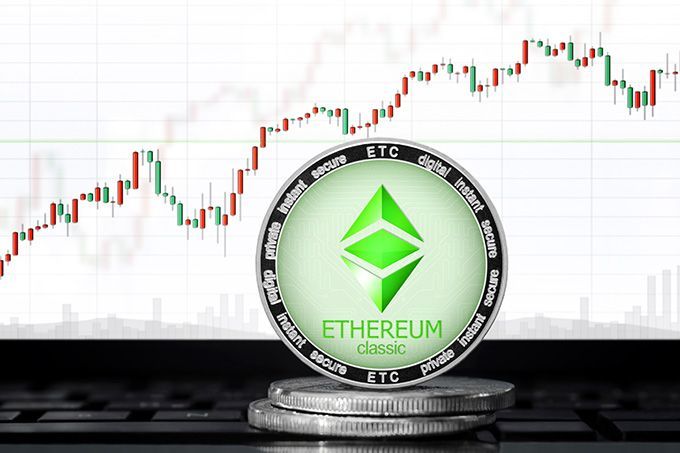
The idea was simple, but creating it, as you'll soon find out, was not. To have voting rights in the DAO, you would have to buy special tokens. These "DAO Tokens" would be bought using Ethereum's native cryptocurrency Ether. Owning DAO Tokens meant that you were part of the decision-making process that decided which dApps received money and which didn't.
To get a dApp (decentralized application) approved, the developer behind it would first need it greenlighted by a group of known experts and developers on the Ethereum network. It would then be put to a vote. If the proposed dApp received at least 20% of the votes cast by contributors to the DAO, the money would be allocated, and work could be continued on the project.
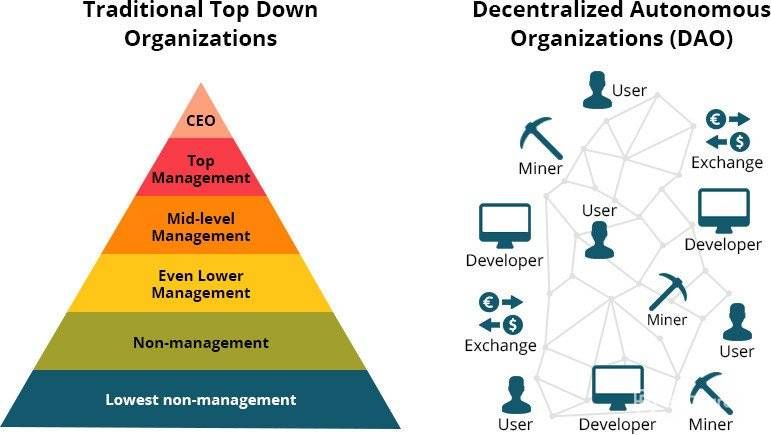
The DAO was a revolutionary proposal that proved incredibly popular amongst investors. It seemed that everyone who knew about Ethereum wanted to buy the right to vote on the network. They were drawn by the flexibility and transparency the system seemed to offer. During the first month that DAO Tokens were sold, the project amassed a substantial number of Ether coins. The estimated value at the time these coins were contributed was $150 million. This represented almost 15% of all Ether in existence.
As part of The DAO's programming, those behind it were careful to create an exit option. It would be no good if, once you were in, you were trapped there! What if ridiculous projects that you wanted no part on started to be given the go-ahead by the community?

A way out of The DAO was therefore created. It was known as the "Split Function". This would allow investors to reclaim the Ether that they'd contributed. Using this "Split Function", users could also create what was referred to as a "Child DAO". If multiple DAO members joined you, you could even start accepting other ideas for dApps and allocate money to develop them.
The only condition that needed upholding in the whole smart contract was that if members left the DAO, they would not be able to spend their Ether for 28 days. However, many developers highlighted this as a potential loophole and quickly raised the issue. Their protests were not taken seriously by the creators of the DAO, however.
What Could Possibly Go Wrong? The DAO Hack
The loopholes that some sectors of the Ethereum community warned about were exploited on a fateful day in mid-June 2016. Someone successfully managed to steal around one-third of the money that had been kept in The DAO smart contract. For the enterprising hacker, it could have been quite the payday! They almost managed to make off with Ether that was worth around $50 million at the time!
Let's look a little closer at how the attacker was able to exploit the loophole.
If a holder of DAO Tokens wanted to leave the contract, all they had to do is request that they were removed. The process was then two-fold. First, the user would receive the ETH coins that they contributed to The DAO in the first place. Second, the transaction would update the ledger, and the total number of coins in the contract would be recalculated.
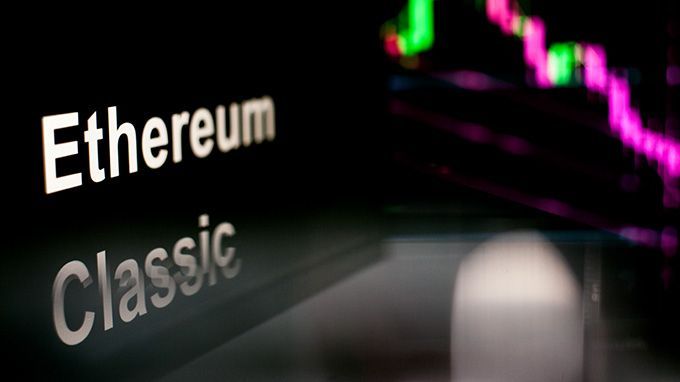
However, the hacker was able to create a function that made the process repeat itself before the ledger could be updated. This meant they were paid many times the amount of ETH coins that they had originally contributed.
The process repeated until around a third of the total Ether stored on the contract was transferred to the hacker's "Child DAO" contract. This caused an uproar amongst those following The DAO's development.
At this point, if you're holding a few ETH coins, you might be panicking. You might think that the whole system is broken. Don't worry. It's not. As one developer and Ethereum co-founder stated at the time: saying that it was the Ethereum network's fault for the attack on the DAO would be like blaming "the internet" each time a website faces issues that causes it to fail.

Did you know?
All Crypto Exchanges may look similar to you but they're NOT all the same!
What Could be Done About The DAO Hack?
Understandably but irrationally, a lot of early investors, who were not blockchain coders or developers themselves, but had heard about The DAO attack, thought Ethereum was broken, and rushed to sell their coins. The price dropped from around $20 to $13, and many claimed this was the death of Ethereum.

However, since there was the 28-day clause in the smart contract, there was nothing at all that the hacker could do with his $50 million until that time had expired. This gave the Ethereum community time to a) discuss a potential solution, and b) complete any potential solution. There were three ideas put forward:
- The "survival of the fittest" approach - do nothing. Bad code deserves to be exploited. This should be seen as an expensive lesson.
- Soft fork (more on this in a moment).
- A hard fork (again, information coming shortly on this too!)
I’ll discuss the advantages and disadvantages of each below.
Do Nothing
The "do nothing" approach draws on the ideology that code is law. If you make bad code, you should be punished. If you're willing to mess around with hundreds of millions of dollars with untested code, you should face the consequences. Early crypto communities having such a strong libertarian leaning, it's not surprising that this option found such support.
Soft Fork: What is a Soft Fork?
Since this is an article aimed at beginners trying to understand the Ethereum Classic currency, I'd better explain exactly what is meant by a soft fork.
Blockchains can be changed in one of two ways. With a hard fork, or a soft fork. A soft fork is a change in the network's rules that is backward compatible. Don't worry if that sounds incredibly complicated, it's really not!
Just think of it like Microsoft Word. If you have the newest version of MS word and save a text document to a USB drive, it will still work just fine when you take it over to your friend's house who might have MS Word 2007 edition. That's what we mean by backward compatibility.
Just like in the MS Word example, the changes in the rules of the blockchain that are features of the newer chain won't work in the older version of the chain. For example, words that are added to MS Word’s spell checker will come up as errors on the older version of the software, but not on the newer one.
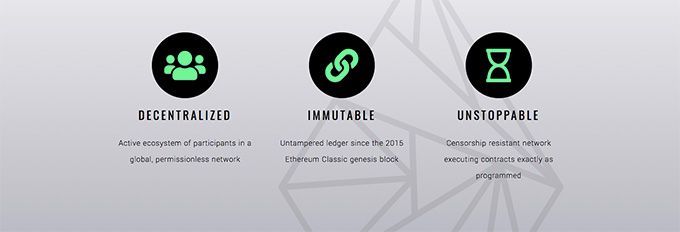
The soft fork idea, when applied to the mess that The DAO had left the Ethereum developers in, would mean that it was the user's choice whether they wanted to run the new code or not. However, whether they did or didn't, they'd still be able to communicate with one another. The proposal would, in theory, completely lock up the Ether that the hacker had stolen. The soft fork would mean that any blocks that contain a transaction that involved moving stolen coins would be ignored.
The idea seemed fabulous on paper, and had a lot of support. However, it wasn't long before a community member identified another potential problem. The soft fork would open the network up to another potential risk - a "Denial of Service" attack.
What Risks did a Soft Fork Denial of Service (DoS) Attack Pose?
Miners validating transactions on the Ethereum network are rewarded with "gas". This reward also protects them from DoS attacks. To spam the network with transactions, an attacker would need to include a lot of "gas" for every "fake" transaction they created.
This would make it prohibitively expensive to attack the network in such a way. The problem with the soft fork idea is that attackers could spam the DAO contract itself with transactions. This would force the miners to solve many pointless algorithms and they'd receive practically no financial reward for doing them.

This meant that the soft fork idea was scrapped. It also limited the number of potential solutions to The DAO attack to just two: Do nothing and hard fork.
Hard Fork: What is a Hard Fork?
A soft fork is backward compatible, and a hard fork is not. This is the main difference between the two ways of upgrading the Ethereum (or any) blockchain.
There is no way of changing a hard fork once it is completed. If you, as a miner, don't implement the new code (rules) yourself, not only can you not use the updated version of the software, but you also can no longer interact with the new blockchain or network in any way.
The proposed hard fork in the Ethereum network would split the blockchain at a particular point. The point proposed was right before The DAO attack. The idea is that until the point selected, the old chain and the new chain (created by the hard work) would be identical. Following the fork, the chain would split, and each new chain would become independent from each other.
The idea behind the hard work is that it would refund all the missing funds to those who had lost out thanks to The DAO attack. There was to be a refund smart contract coded that would allow users to withdraw their money.
The Ethereum Split and its Controversy
This idea was highly controversial amongst members of the Ethereum community. There were those that took the "code is law" stance and said that the whole point of a blockchain is to not allow a single authority to control it. Meanwhile, there were many who just wanted their money back.
Those who felt that "code is a law" decided to continue running the old version of the software that existed before the Ethereum Classic fork and effectively kept the old chain (with The DAO attack) intact. Meanwhile, those who supported the refund began to mine the new chain and two currencies were created where previously there had only been one.

The unaltered version of the chain has become known as "Ethereum Classic" (ETC), and the new one, complete with The DAO attack refund, is now known as ETH or just Ethereum. This second chain has the majority of the community’s support as well as most of the lead developers on the project. This is reflected by the current difference in market capitalization between Ethereum and Ethereum Classic following the Ethereum split.
What is Ethereum Classic?
As I've mentioned, Ethereum Classic was the original chain, "warts and all" so to speak. There was no change to allow The DAO attack refund.
The current price of each Ethereum Classic coin is $6,92 (as of August 21, 2023). It has a market capitalization of $800 million. It currently occupies the number 18 spot in terms of total network value. I’ve included the complete graph of the digital asset below, too, courtesy of Coinmarketcap:

Whilst Ethereum Classic is largely the same cryptocurrency like Ethereum (ETH), it has one hugr difference – most of the original developers no longer work on it. Founders Vitalik Buterin and Gavin Wood both left it behind in favor of the new chain. With such big names backing it probably seems curious that anyone would still want anything to do with Ethereum Classic.
To understand why they do, it’s important to first understand blockchains properly. The most important and potentially ground-breaking feature of blockchains is that they work without being controlled by any forces either connected to the project, more importantly, outside of it.
For those who continue to support ETC, the hard fork was a convenient cop-out to protect rich investors. It represented the very opposite of what blockchain was designed to achieve. The heavy-handed and controlling approach of those who had lost money in The DAO attack was not acceptable at all.
Ultimately, the question of ETC VS ETH, it comes down to how much each individual values the immutability (lack of ability to change) a blockchain.
Ethereum (ETH)
As you can tell from each currency’s market capitalization, the cryptocurrency community consider Ethereum to be the true version of the Ethereum chain. At the time of writing, the value of the network absolutely dwarves that of Ethereum Classic.
The price per ETH is currently just shy of $400. The total market capitalization of the network is an impressive $45 billion. This makes it second in terms of most valuable cryptocurrency networks only to Bitcoin.
Again, I’ve included the graph of Ethereum below. You’ll see a red arrow around the time of the Ethereum split.
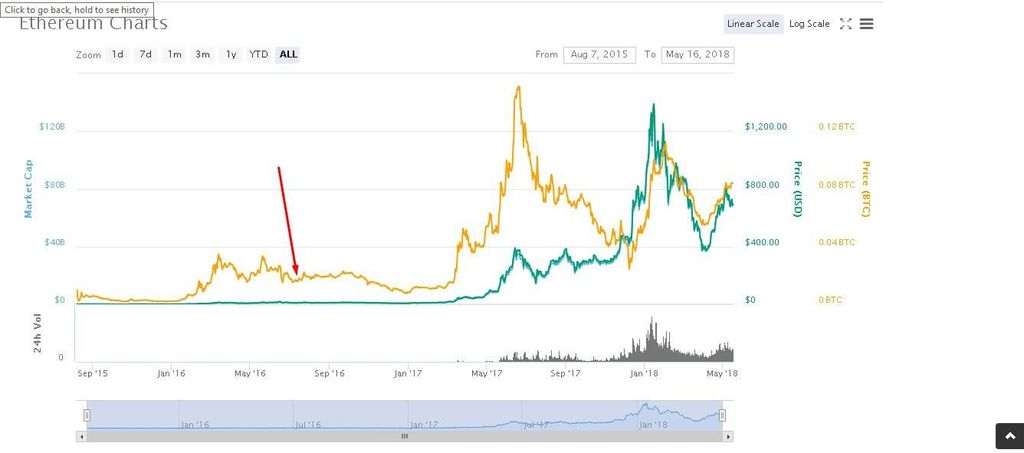
Advantages and Disadvantages of Ethereum Classic and Ethereum
Now, let's quickly bullet-point some of the core advantages and disadvantages of Ethereum and Ethereum Classic.
Ethereum
 PROs
PROs
✓ Has most of the original developers behind it. These are still committed to the original road map.
✓ Hash a higher hash rate than ETC. This means there are more miners validating transactions on the network and should mean it is more secure.
✓ Has the Enterprise Ethereum Alliance in its corner. This is a group of some of the planet’s largest companies and banks who are experimenting with the network. When members began being announced for the EEA, the price of Ethereum really took off.
✓ Can be purchased on most of the high-end cryptocurrency exchanges (i.e. Kucoin and Binance), and can be stored on the majority of the most secure crypto wallets out there (Ledger, Trezor, etc.). Note, though, that all of this does also apply to ETC, too.
 CONs
CONs
✗ The Ethereum split that created ETH and ETC broke one of the major rules of a blockchain. The blockchain is supposed to be completely immutable (not able to change it). If it was changed once to save people’s money, and it can theoretically happen again. The next time might not be such a community-focused change though.
Ethereum Classic
 PROs
PROs
✓ Stayed true to the original vision of what a blockchain is supposed to be. What is the point of an immutable ledger if it can be changed at the whim of the community?
✓ Potentially more upside potential for investors. Naturally, this is a high-risk investment but there are some influential backers of the project such as Barry Silbert of the Grayscale Investment Trust.
 CONs
CONs
✗ It doesn’t have the EEA who are working on created decentralized applications for its blockchain.
✗ No longer has the lead Ethereum developers who came up with the idea of Ethereum in the first place.
✗ Some consider it to be backed by those that are opposed to the entire Ethereum project itself.

Did you know?
All Crypto Exchanges may look similar to you but they're NOT all the same!
Conclusion
So, that’s my guide to Ethereum Classic. Hopefully, you now know a lot more about how the two cryptocurrencies with Ethereum in the title came to be.
We’ve covered a lot in this guide so let’s recap. You should have learned:
- What is The DAO?
- Why The DAO failed.
- What hard forks and soft forks are.
- Why the Ethereum community split over the decision to make the Ethereum split.
- What is Ethereum Classic (ETC)?
- What is Ethereum (ETH)?
- The advantages and disadvantages of both.
I hope you have found this guide on the 30th most popular cryptocurrency both enjoyable and useful.
Please also remember - if you are planning on purchase some ETC for yourself, always make sure that the process is secure, and that you're doing so via a trustworthy cryptocurrency exchange. The ideal plan of action would look like this:
- Registration on Kucoin (or any other top-rated crypto exchange that offers ETC as an option);
- Purchase of the desired amount of ETC coins;
- Storage of those same coins on one of the reliable and trustworthy cryptocurrency wallets (i.e. the Ledger Nano X or Trezor Model T).
With all your new-found knowledge, which do you think is more important – refunding investors or maintaining the immutability of a blockchain? We’d love to hear your thoughts on the matter!
The content published on this website is not aimed to give any kind of financial, investment, trading, or any other form of advice. BitDegree.org does not endorse or suggest you to buy, sell or hold any kind of cryptocurrency. Before making financial investment decisions, do consult your financial advisor.









